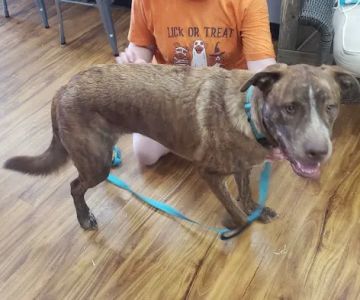1. How to Manage Your Pet’s Anxiety During Car Trips
As much as we love to bring our pets along on road trips, many pets struggle with anxiety during car rides. The constant motion, unfamiliar environments, and long hours on the road can create an overwhelming experience for our furry companions. If you’ve ever had to deal with a stressed-out dog or cat in the car, you’re not alone. Managing your pet’s anxiety during car trips can be a challenge, but with the right strategies, you can make travel more comfortable and enjoyable for both of you.
In this article, I’ll share effective tips and methods I’ve personally used to help manage my pet’s anxiety during car rides. Whether you’re embarking on a short drive to the vet or going on a long road trip, these tips can help calm your pet and reduce stress for a smoother, more relaxing travel experience.
2. Understanding Pet Anxiety During Car Trips
Before diving into solutions, it’s essential to understand why your pet may experience anxiety during car trips. Anxiety in pets can manifest in many ways, including whining, drooling, panting, or even vomiting. Understanding the root causes of this anxiety can help you take the right approach to address it.
2.1 Motion Sickness
One common cause of anxiety in pets during car trips is motion sickness. Just like humans, some pets are more sensitive to the movement of a vehicle, which can make them feel nauseous and uneasy. This can lead to excessive drooling, vomiting, or restlessness. If your pet struggles with motion sickness, you might want to consider talking to your vet about anti-nausea medication to ease their discomfort.
2.2 Fear of the Car
For some pets, the car is simply a place of fear. Whether it's due to past negative experiences (like trips to the vet or groomer), the sound of the engine, or the unfamiliar surroundings, some pets associate the car with stress. This association can lead to heightened anxiety every time they step into a vehicle. It’s important to recognize that this fear is valid and should be addressed with patience and training.
2.3 Lack of Familiarity
Pets, especially dogs, thrive on routine. Car trips disrupt their regular environment, which can make them anxious. The unfamiliar sights, smells, and sounds can overwhelm them. My dog, for example, always gets anxious on long road trips because he’s not used to being confined to a car for extended periods. Understanding this aspect of pet anxiety can help you better prepare for the journey and manage your pet’s expectations.
3. Effective Strategies to Manage Pet Anxiety During Car Trips
Once you understand why your pet experiences anxiety during car trips, it’s time to implement strategies to manage their stress. Here are some tips that have worked for me and other pet owners when it comes to reducing anxiety during travel:
3.1 Gradual Desensitization
One of the most effective ways to help your pet get used to car trips is through gradual desensitization. Start by getting your pet accustomed to the car in a calm, controlled environment. Take short trips to places your pet enjoys, like the park or a local pet store, and gradually increase the length of the rides. I found that taking my dog on brief car rides to happy places helped him associate the car with positive experiences, which reduced his overall anxiety.
3.2 Create a Comfortable Space in the Car
Making the car a comfortable and secure space for your pet is crucial. Ensure that your pet has a designated spot where they feel safe and can settle down. You can bring their favorite blanket or bed to provide familiarity and comfort. Some pets feel more secure in a crate, while others prefer being in the backseat with a harness to keep them safe and secure. I’ve noticed that when my dog has a comfortable spot in the car, he’s less likely to get anxious or restless.
3.3 Use Calming Products
There are several calming products on the market that can help reduce your pet’s anxiety during car trips. These include calming sprays, diffusers, and anxiety-reducing collars. I personally use a calming spray with lavender and chamomile on my pet’s bed in the car, which helps him relax. There are also calming treats and supplements that can be given before a car trip to help ease anxiety. Always consult your vet before using any new products to ensure they’re safe for your pet.
3.4 Provide Plenty of Breaks
For longer car trips, providing regular breaks is essential to help your pet stay calm and comfortable. Stop every 1-2 hours to allow your pet to stretch their legs, hydrate, and relieve themselves. This not only gives your pet a chance to unwind but also prevents them from feeling cooped up in the car for too long. On one long road trip, I made sure to stop frequently, and it kept my dog from becoming too anxious or agitated.
3.5 Stay Calm and Confident
Pets are highly attuned to our emotions, and they often mirror our feelings. If you’re anxious or stressed during the car trip, your pet may pick up on that and become more anxious themselves. To manage your pet’s anxiety, it’s important to stay calm and confident. I always try to remain relaxed during car trips, even when things aren’t going as planned. By staying calm, I’ve noticed my dog remains more relaxed as well.
3.6 Consult a Veterinarian
If your pet’s anxiety persists despite your efforts, it may be time to consult a veterinarian. Your vet can help identify any underlying health issues contributing to the anxiety, such as motion sickness, and recommend medications or treatments to help manage the stress. Some pets may benefit from prescription medication or anxiety treatments that can make car trips much more manageable. I took my dog to the vet when his anxiety didn’t improve, and they provided some valuable solutions that have helped him immensely.
4. Creating a Positive Association with Car Trips
One of the best ways to manage your pet’s anxiety during car trips is to create positive associations with the experience. Reward your pet with treats, praise, and fun activities once you reach your destination. By linking car trips with positive outcomes, your pet will begin to see the journey as something they look forward to rather than something to fear.
If you’re looking for additional tips, training aids, or calming products to help your pet with car anxiety, visit Hidden Brook Veterinary for expert recommendations. Our resources are designed to make your pet’s travel experience as stress-free and enjoyable as possible.











